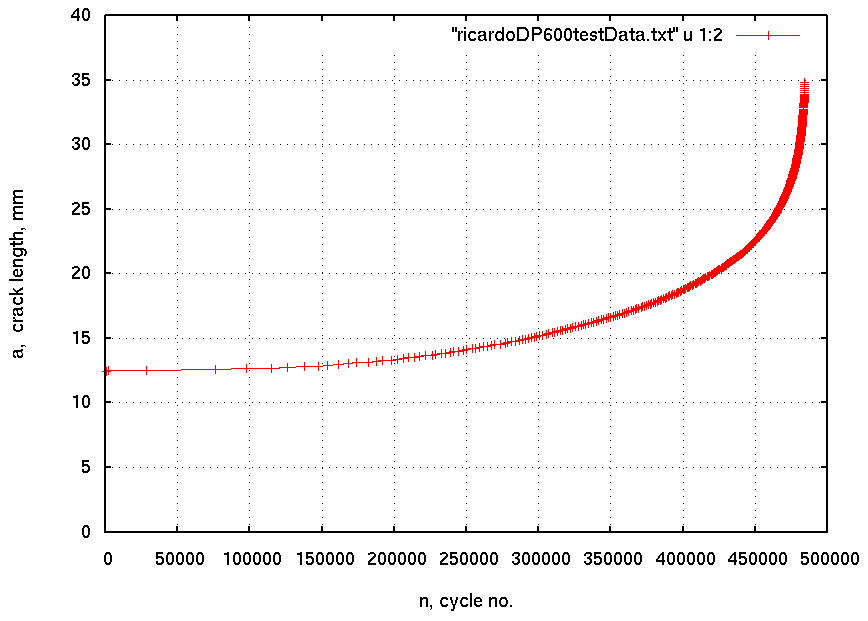Case Studies 8: Crack Propagation in a Dual Phase Steel CT Specimen
Provided to F.D.E. by L.C.H.Ricardo
Web Page: https://fde.uwaterloo.ca/Fde/CaseStudies/Ricardo/recardoCase8.html
Data References:
1. L.C.H.Ricardo, "Modelamento do Fenomeno de Abertura e Fechamento de
Trincas em Fadiga Pelo Metodo dos Elementos Finitos," (Modeling Fatigue
Crack Opening and Closing Phenomenon by Finite Element Method)
Ph.D Thesis U. Sao Paulo, Dept. Structures, 2003
2. L.C.H.Ricardo, "Simulation of Crack Propagation Curves by Finite
Element Method," Struc. Integrity and Failure, Sept. 2006,
Inst. of Mtls. Engr. Australasia Ltd, pp.368-377
Material
Specimens were made from a DP600 steel 3.8mm thick plate.
( Su =634 mpa, Sy= 409mpa, Emod= 210000mpa )
Crack Propagation data was obtained by using a constant load
range test with an average Pmax= 3415. N and a load ratio R=0.1.
The crack propagation da/dN test results are available:
Compact Tension Crack Propagation
Initial crack length, including saw cut, was 12.42mm.
Geometry of CT Specimens

Compact Tension specimens were tested in load control in a servo-hydraulic
fatigue test frame.
Load History Applied to CT Specimen :
Constant load amplitude R=0.1 with Pmax = 3415 Newtons.
Fatigue Test Results

Fig.2: Crack length vs. cycle number for DP600 CT Specimen
A "csv" text file of the crack propagation results for the CT specimen
is available:
lcRicardoTestHistory.csv
( Note that csv file is space delimited, not comma delimited. )
The file consists of measurements of crack length, Kmax, Kmin, Kclose
and crack propagation rate da/dn.
Return to Case Studies Page
Return to Home Page

